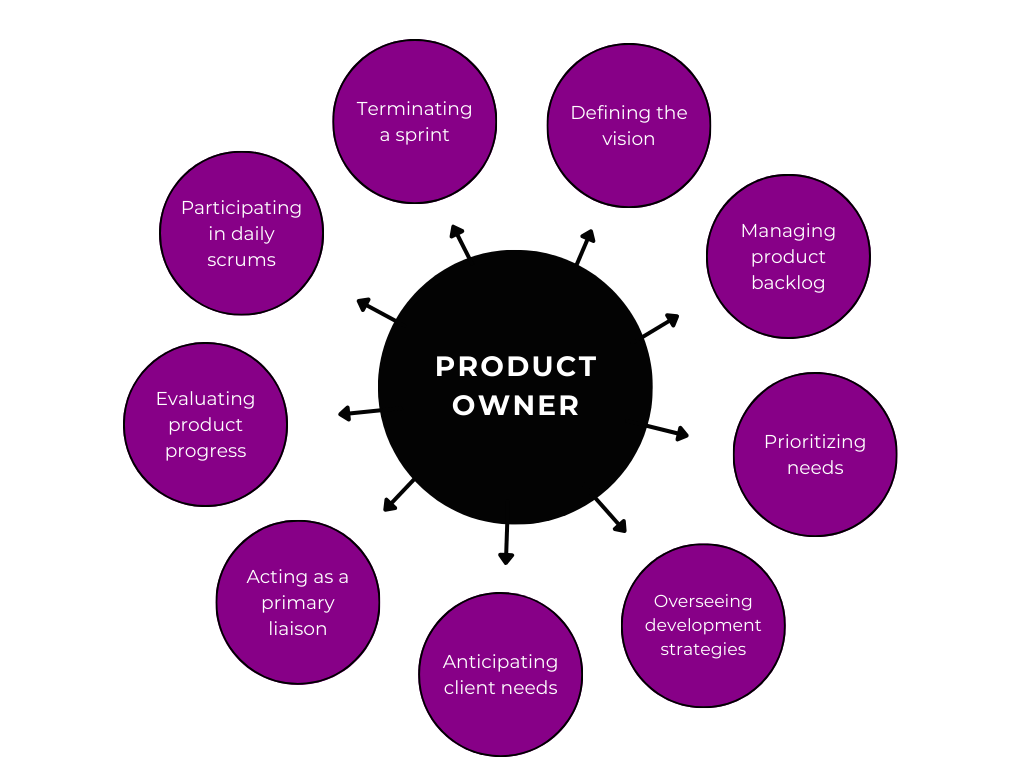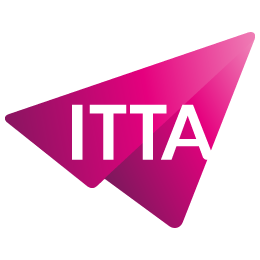Home > Product Owner: The Central Role for Successfully Managing a Scrum Project in 2025
Imagine a Scrum team navigating blindly, moving forward without a clear direction, delivering features that fail to meet user expectations… A project doomed to failure. Fortunately, a key player ensures this disaster is avoided: the Product Owner. As the true orchestrator between customer needs and development priorities, they are responsible for delivering a high-value product. But in 2025, this role is evolving and becoming even more strategic, driven by new market demands and advancements in Agile methodologies.
What exactly are the responsibilities of a Product Owner? Why are they so crucial in a Scrum team? And most importantly, what skills are essential to excel in this role? Let’s dive into this key profession to understand how it shapes the success of today’s and tomorrow’s digital projects.

The Product Owner role is essential for maximizing the value of a product within a Scrum team. As a key team member, they are responsible for defining and prioritizing product features based on customer needs and business objectives. This crucial responsibility makes the Product Owner a central figure in delivering high-quality products.
A Product Owner must translate customer needs into clear and detailed “user stories” to guide development. This translation requires not only a deep understanding of customer requirements but also the ability to define product features in a precise and actionable manner. This dual skillset ensures that the development team works on the most relevant and high-priority tasks.
Additionally, this indispensable figure must monitor and communicate changes in customer needs to the development team. By being the voice of the customer within the team, they ensure that products not only meet but exceed expectations. This ability to navigate between customer demands and team capabilities is what sets apart an excellent Product Owner.

This key Agile role has several crucial responsibilities that are essential for the success of a Scrum project. These responsibilities include managing the Product Backlog, defining the product vision, and ensuring effective communication with stakeholders. Each of these responsibilities plays a vital role in aligning the final product with customer expectations and business goals.
Managing the Product Backlog is one of the most important responsibilities of the Product Owner. The Product Backlog is a list of tasks and product requirements, and the Product Owner is responsible for creating and managing it. This list must be regularly updated to reflect current product priorities and customer needs.
A good Product Owner must be able to prioritize tasks within the backlog to maximize the value delivered. Prioritization is crucial to ensure that resources are wisely allocated, enabling the product to be delivered quickly and with maximum impact. Effective Product Backlog management ensures that the development team focuses on the most critical tasks.
Moreover, flexibility is an essential quality for a Product Owner. Agile teams require the Product Owner to quickly adjust priorities based on customer feedback. The ability to adapt the Product Backlog in response to changes and new insights is key to the continuous success of product development.
Defining the product vision is another key responsibility of the Product Owner. An effective product vision must be both inspiring and clear, allowing the team to rally around common goals. The Product Owner must also identify market opportunities and understand customer requirements. This is essential for anticipating changes and ensuring that the final product meets quality standards and market expectations. Here are some key points to consider:
Communication with stakeholders is another major responsibility of the Product Owner. They must communicate with:
Strong communication skills are essential as they foster collaboration and ensure that the product meets the expectations of all project stakeholders. Trust and collaboration with cross-functional teams are crucial for project success, and the Product Owner must possess leadership skills, empathy, and adaptability.

The key responsibilities of the Product Owner
To excel in their role, the Product Owner must possess a set of key skills. These include product management, knowledge of Agile methodologies, and strong communication skills. Each of these skills is essential for high performance.
Product management skills are fundamental. The Product Owner must be able to prioritize the backlog to align the team’s efforts with strategic objectives. This prioritization ensures that the most important features are developed first, maximizing the product’s value.
Furthermore, as a key figure in the project, the Product Owner must recognize product requirements and collaborate daily with the Scrum team and stakeholders. This collaboration enables the generation of new ideas and enhanced knowledge in product management while remaining adaptable and receptive to change.
A strong understanding of Agile methodologies, particularly Scrum, is essential for a Product Owner. This expertise allows them to collaborate effectively with the development team. A deep knowledge of the industry and how the customer uses the product is also necessary to anticipate needs and adjust priorities accordingly.
Communication skills are also essential. The Product Owner must be able to translate customer requirements into appropriate technical language for the development team. This translation is crucial to ensure that the team clearly understands the needs and product priorities.
Moreover, strong communication skills enable the Product Owner to ensure that all stakeholders are aligned with the project’s objectives. This clarity is vital for successful product development and customer satisfaction.

Understanding the differences between the roles of Product Owner, Scrum Master, and Project Manager is essential to grasp each person’s specific responsibilities. Here is an overview of the roles:
This distinction is crucial to prevent overlapping responsibilities and ensure effective project management.
The Scrum Master, in particular, helps the team follow the Scrum framework, facilitating efficiency and collaboration. The Product Owner defines what needs to be done and in what order, while the Scrum Master ensures that the team executes tasks effectively. This harmonious collaboration is essential for the success of a Scrum project.
Becoming a Product Owner offers numerous opportunities and advantages. This role is highly respected and in great demand, providing interesting career prospects. The motivations for pursuing this key role in Agile project management will be detailed in the following sections.
Career opportunities for a Product Owner are abundant. Companies actively seek professionals in this role to ensure effective management of priorities and customer needs. Due to this growing demand, a Product Owner can expect a competitive salary.
The role of a Product Owner comes with several challenges, such as a lack of understanding of Scrum and resistance to adopting Agile practices. These challenges can make managing teams and projects complex, requiring continuous adaptation.
However, this role is also highly rewarding. By playing a key role in the creation of high-quality products, the Product Owner directly contributes to customer satisfaction and the company’s success. This contribution provides a great sense of professional and personal fulfillment.

In summary, the role of the Product Owner is crucial for the success of Scrum projects. With responsibilities such as managing the Product Backlog, defining the product vision, and communicating with stakeholders, the Product Owner ensures the delivery of high-quality products. Product management skills, knowledge of Agile methodologies, and strong communication abilities are essential to excel in this role. Becoming a Product Owner offers numerous career opportunities and significant rewards, despite the challenges faced.
What is a Product Owner?
A Product Owner is essential within a Scrum team, as they are responsible for maximizing product value by defining and prioritizing features based on customer requirements. Their role is crucial in ensuring that the product effectively meets market expectations.
What is the difference between a Product Owner and a Scrum Master?
The main difference lies in their responsibilities: the Product Owner focuses on maximizing product value and defining priorities, while the Scrum Master ensures that the team follows the Scrum framework and continuously improves efficiency.
What skills are required for a Product Owner?
A Product Owner must master product management, Agile methodologies such as Scrum and Kanban, and have strong communication skills. These abilities are essential for success in this role.
What are the common challenges for a Product Owner?
Common challenges include a lack of understanding of the Scrum methodology, resistance to adopting Agile practices, and managing constantly changing customer priorities. Overcoming these obstacles is crucial for ensuring project success.
Why should I become a Product Owner?
Becoming a Product Owner offers attractive career opportunities, competitive salaries, and the satisfaction of contributing to the creation of high-quality products. This role is both rewarding and strategic in developing innovative services.

ITTA is the leader in IT training and project management solutions and services in French-speaking Switzerland.
Our latest posts
Subscribe to the newsletter
Consult our confirmed trainings and sessions

Nous utilisons des cookies afin de vous garantir une expérience de navigation fluide, agréable et entièrement sécurisée sur notre site. Ces cookies nous permettent d’analyser et d’améliorer nos services en continu, afin de mieux répondre à vos attentes.
Monday to Friday
8:30 AM to 6:00 PM
Tel. 058 307 73 00
ITTA
Route des jeunes 35
1227 Carouge, Suisse
Monday to Friday, from 8:30 am to 06:00 pm.